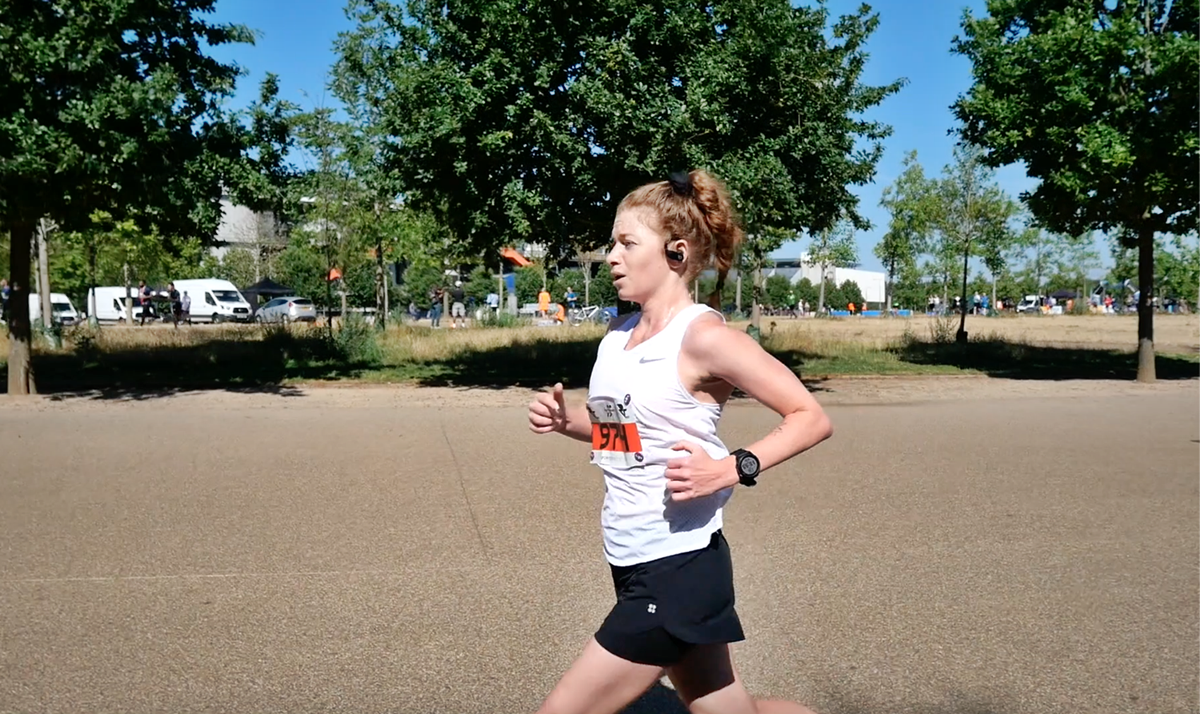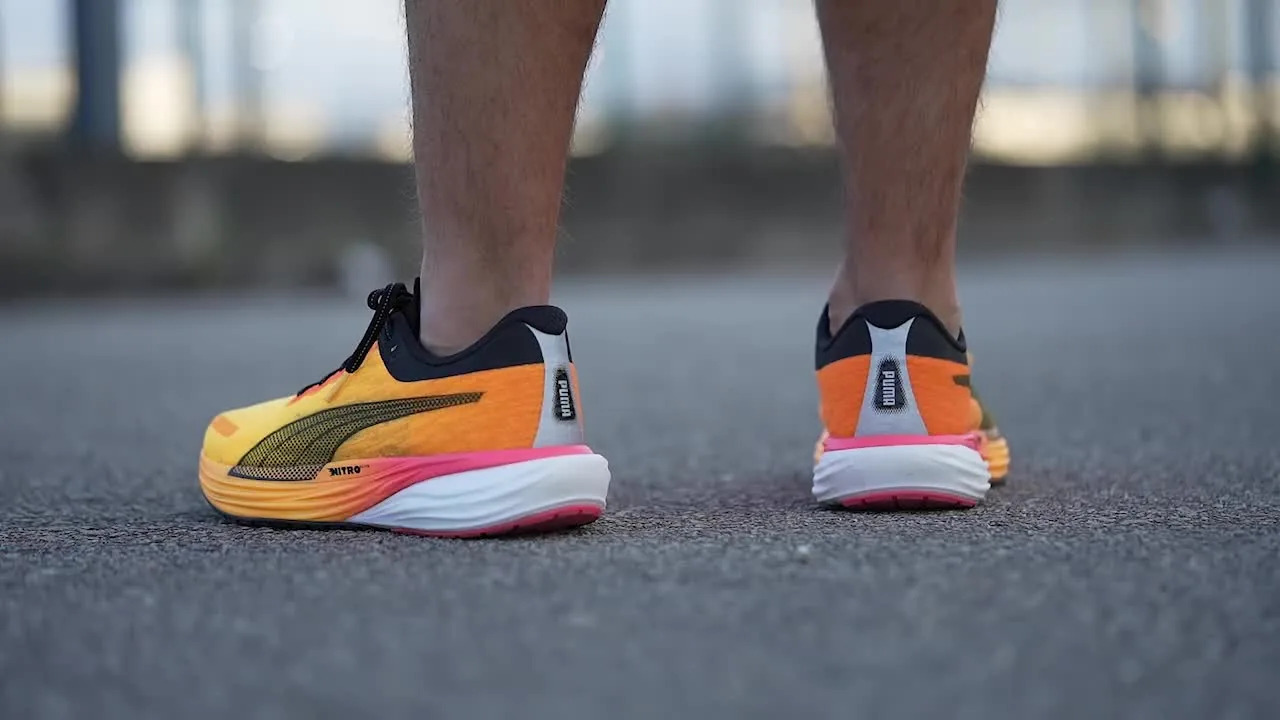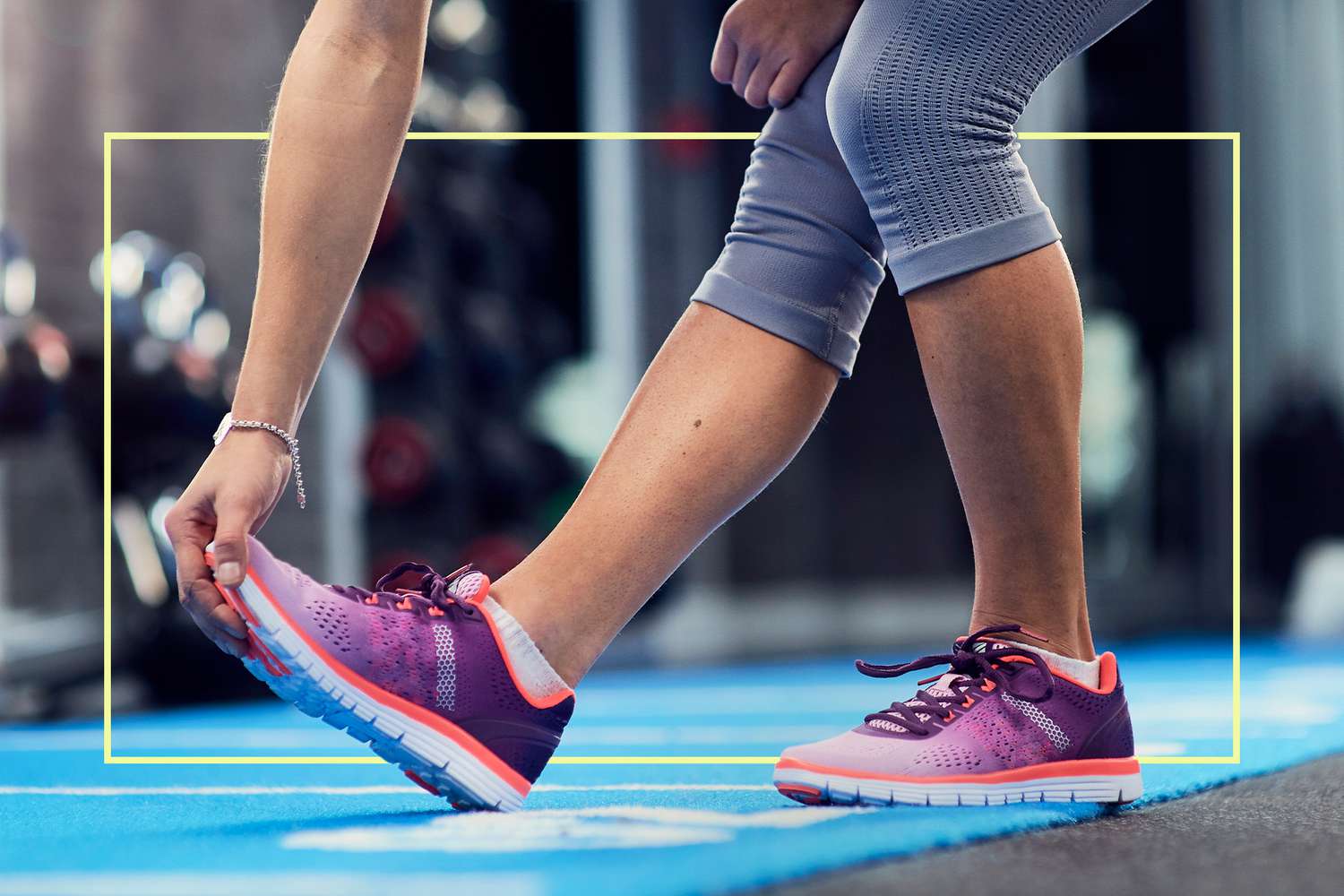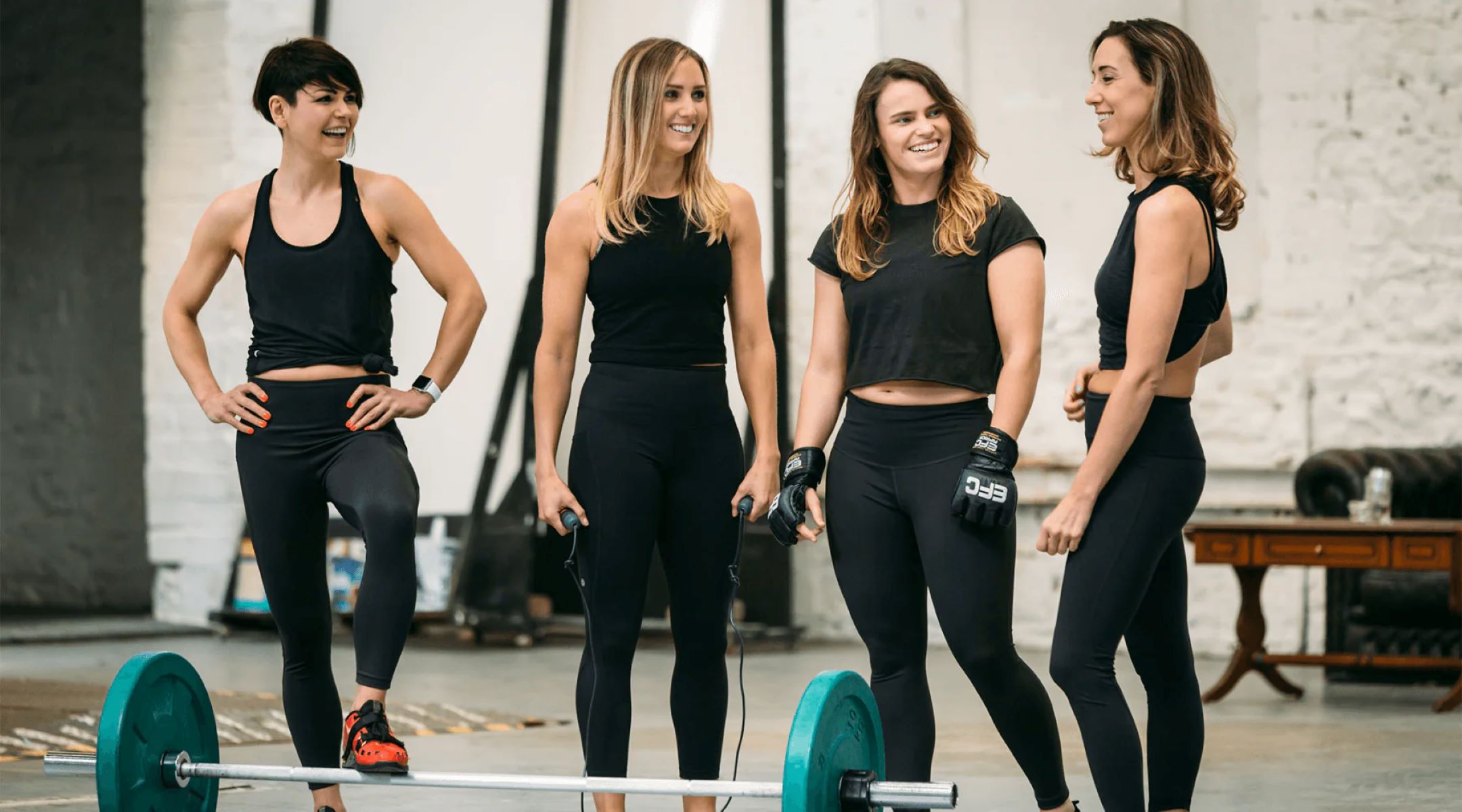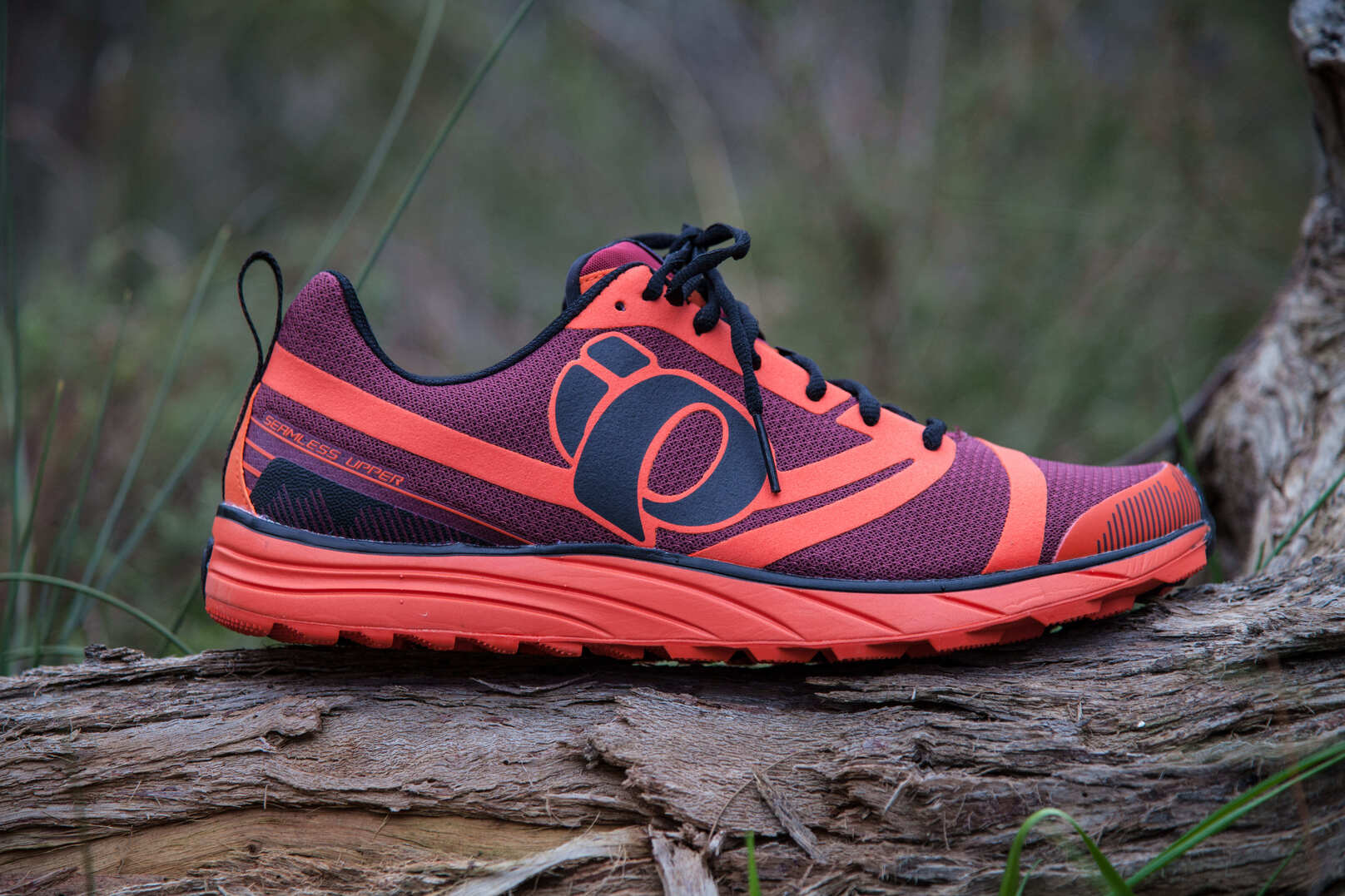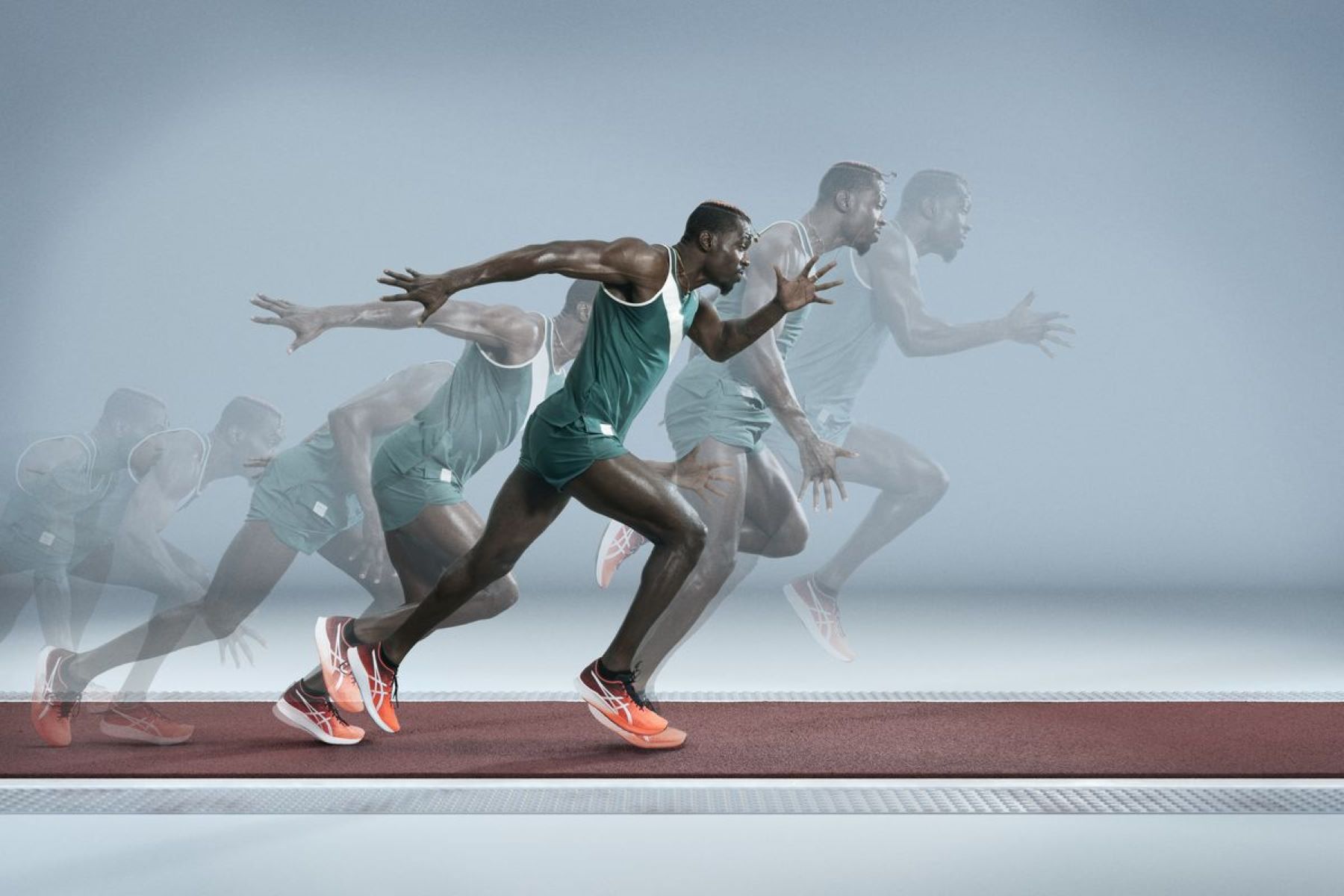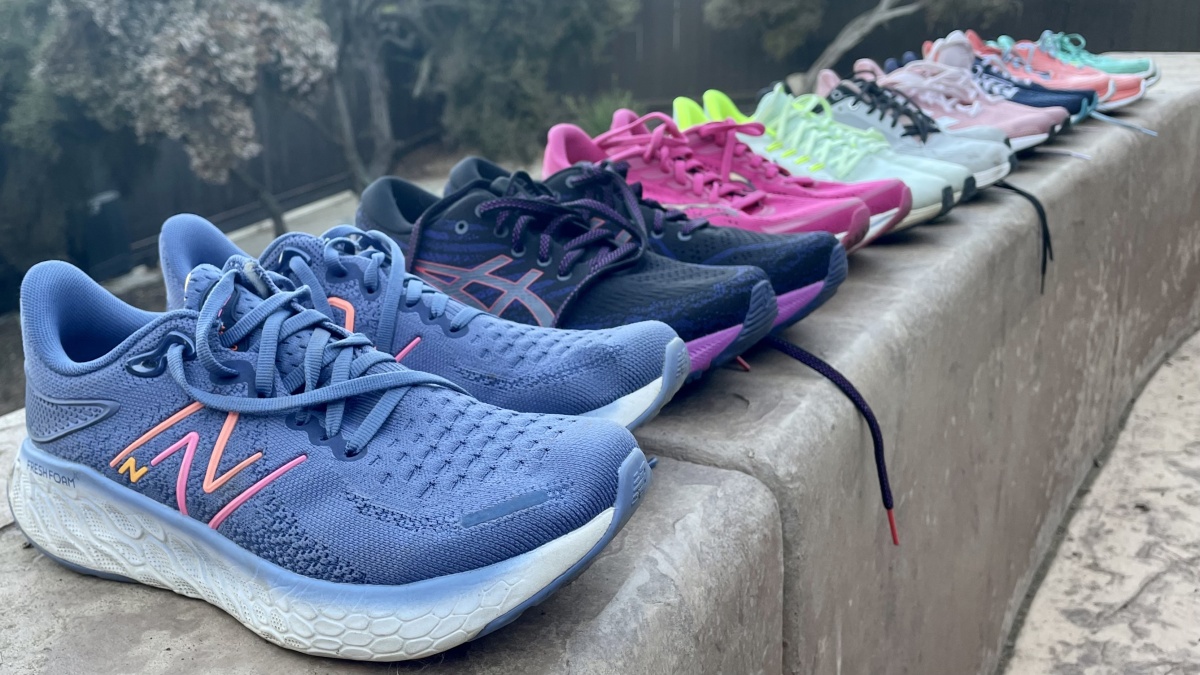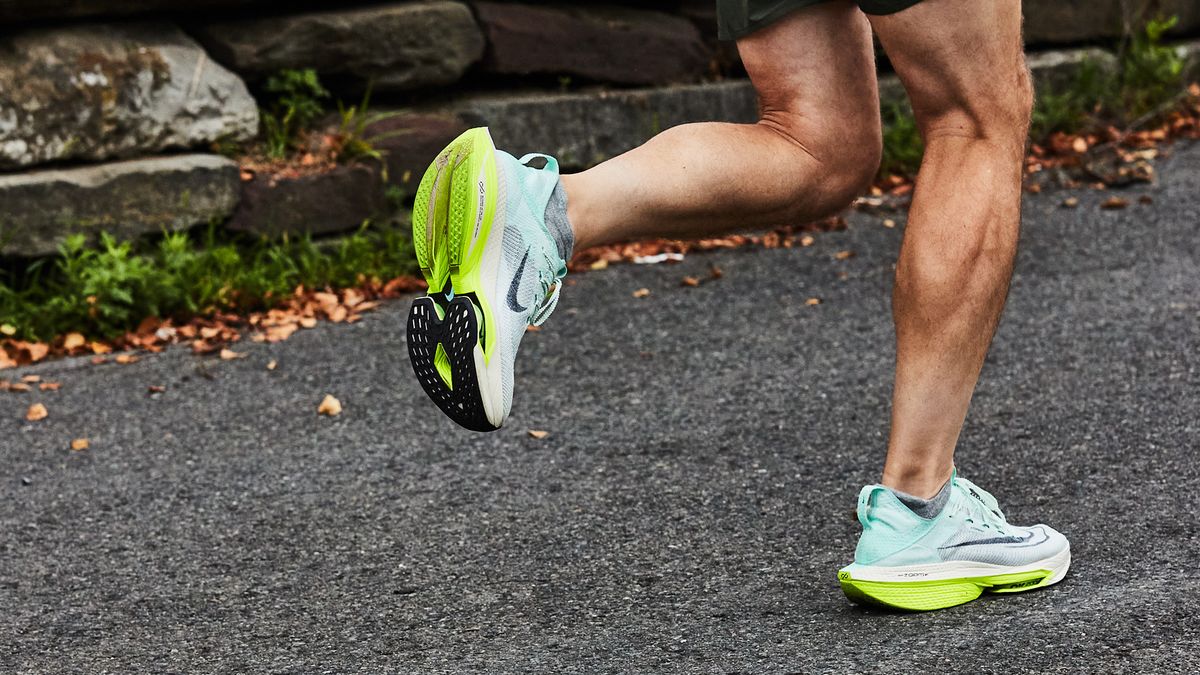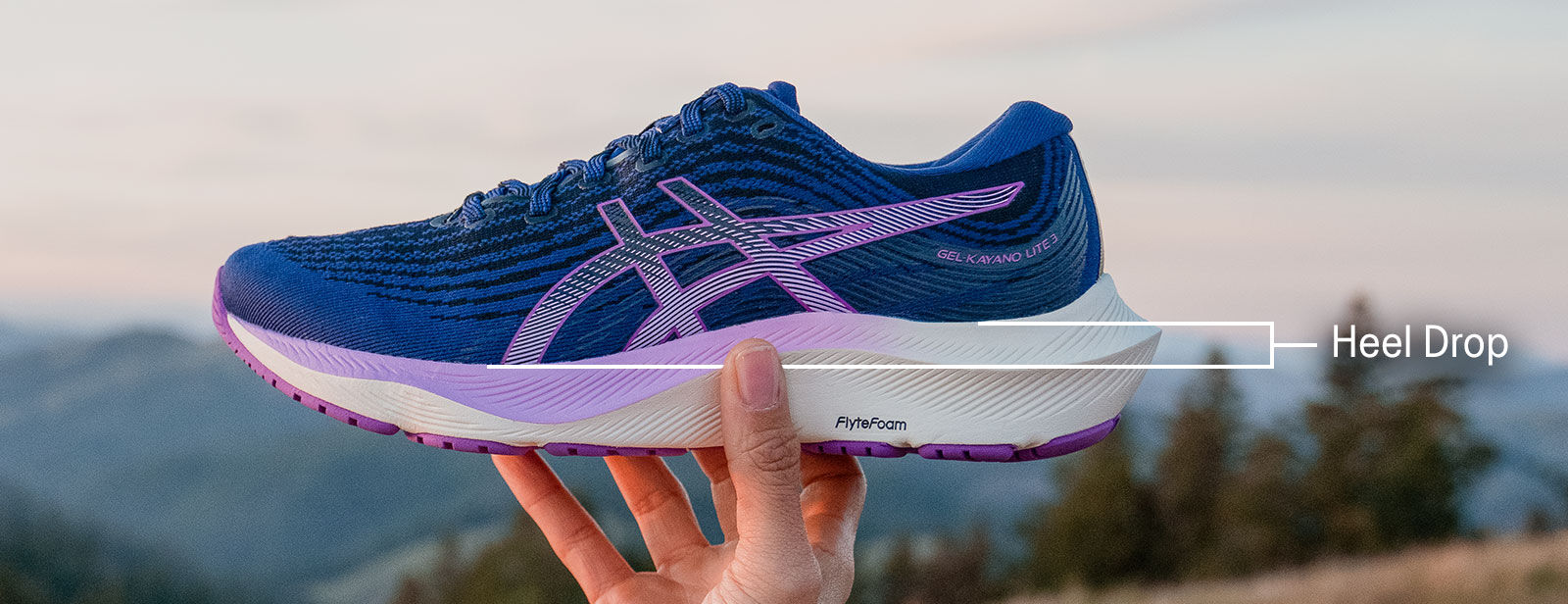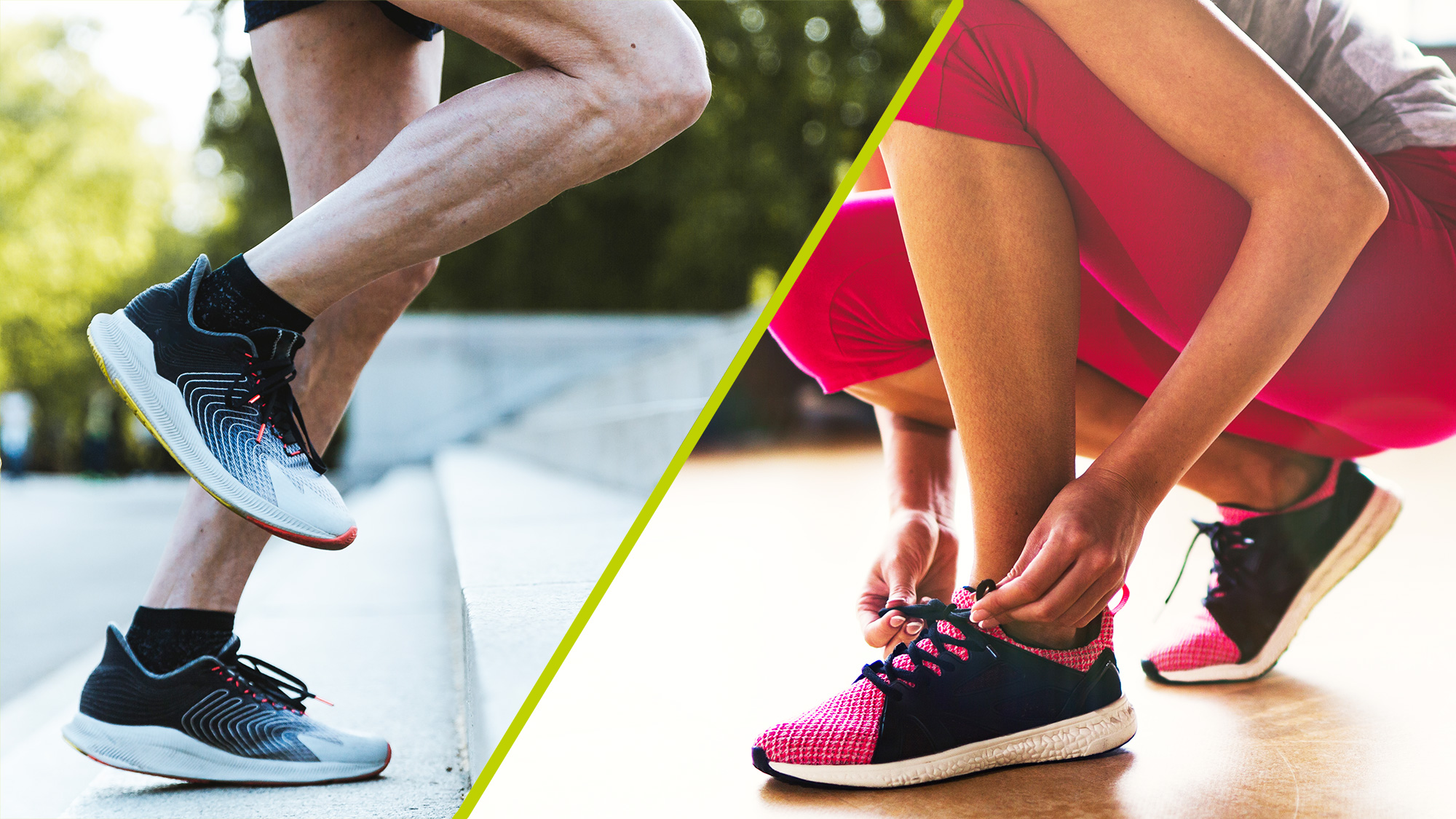Home>Misc>Featured>What Is The Difference Between Training Shoes And Running Shoes
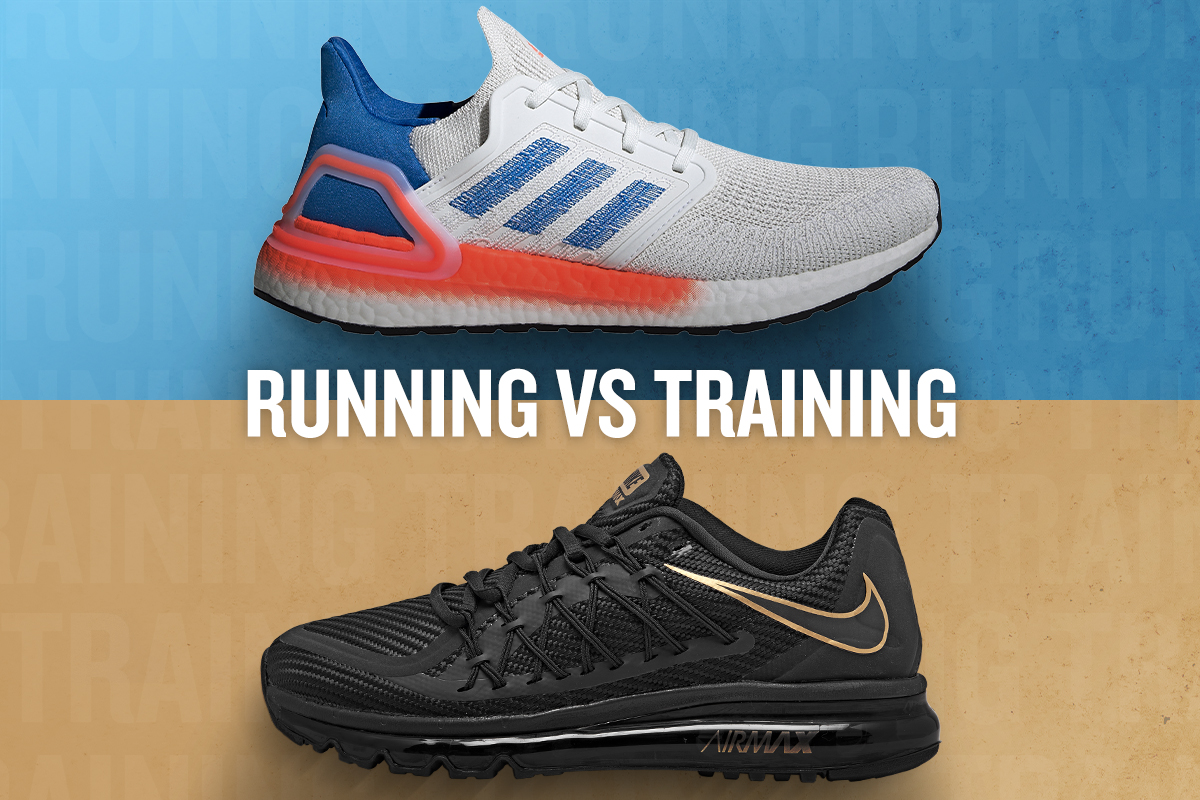

Featured
What Is The Difference Between Training Shoes And Running Shoes
Modified: May 22, 2024
Discover the key distinctions between featured training shoes and running shoes, including their design, support, and cushioning. Choose the right footwear for your exercise regimen today!
Introduction
When it comes to athletic shoes, there are a plethora of options available. Two popular choices among fitness enthusiasts are training shoes and running shoes. While both serve the purpose of providing comfort and support during physical activities, there are key differences between the two. Understanding these differences can help you make an informed decision when selecting the right footwear for your specific needs.
Training shoes and running shoes are designed with different purposes in mind. Training shoes are versatile, multi-functional shoes that are suitable for a wide range of activities, including weightlifting, CrossFit, and gym workouts. On the other hand, running shoes are specifically designed to optimize performance and reduce the risk of injury during running or jogging.
In this article, we will explore the key differences between training shoes and running shoes. We will delve into their design, cushioning, support, flexibility, traction, durability, fit, and overall comfort. By the end, you will have a clear understanding of which type of shoe is best suited for your individual needs and preferences.
So whether you are a dedicated runner, a fitness enthusiast, or someone looking for comfortable shoes to support your active lifestyle, this article will help you navigate the often confusing world of athletic footwear and make an informed decision.
Purpose of Training Shoes
Training shoes are designed to provide support and stability for a wide range of physical activities. They are versatile and suitable for various workouts, such as weightlifting, strength training, HIIT (high-intensity interval training), and CrossFit.
One of the primary purposes of training shoes is to provide lateral stability. These shoes have a wider base and feature a firmer midsole to prevent the foot from rolling during lateral movements, ensuring stability and reducing the risk of injury. The supportive structure of training shoes helps maintain proper form while performing exercises that involve side-to-side movements, such as lunges, lateral lunges, and lateral jumps.
Additionally, training shoes often have a lower heel-to-toe drop compared to running shoes. This means that the difference in height between the heel and toe is minimal, or sometimes even non-existent. The lower drop helps to keep the foot closer to the ground, providing a more stable and balanced platform during weightlifting and squats. It enhances proprioception, allowing for better control and improved performance during strength training exercises.
Another important feature of training shoes is their durability. They are constructed with durable materials, such as reinforced toe caps and stronger outsoles, to withstand the demands of various workouts. The added durability ensures that the shoes can withstand the repetitive impact and abrasion that comes with intense training sessions.
Furthermore, training shoes often feature a combination of cushioning and responsiveness. They provide enough cushioning to absorb impact forces during high-intensity workouts, yet remain responsive to provide a good level of energy return. This allows for quick and explosive movements during activities like plyometrics and box jumps.
Overall, the purpose of training shoes is to provide the necessary support, stability, durability, and cushioning for a wide range of dynamic movements and intense workouts. Whether you are lifting weights, performing HIIT, or engaging in CrossFit, investing in a pair of training shoes can enhance your performance and reduce the risk of injury.
Purpose of Running Shoes
Running shoes are specifically designed to meet the unique needs of runners and joggers. These shoes are optimized for forward motion and provide the necessary cushioning, support, and flexibility to enhance performance and minimize the risk of running-related injuries.
One of the primary purposes of running shoes is to provide cushioning. They are equipped with ample padding in the midsole and heel areas to absorb the impact of each stride. The cushioning helps to reduce the stress on the joints, such as the knees and ankles, and provides a more comfortable running experience. It also helps to prevent injuries caused by repetitive pounding on hard surfaces.
Additionally, running shoes are designed to provide support and stability. They feature a more flexible construction compared to training shoes, allowing for natural foot movement during the running gait cycle. However, they still provide enough support to improve foot alignment and reduce excessive pronation (inward rolling of the foot) or supination (outward rolling of the foot) during the running stride.
Running shoes also often have a higher heel-to-toe drop compared to training shoes. This means that the heel is elevated higher than the toe, creating a slight slope. The higher drop helps to promote a rolling motion from heel to toe, facilitating a more efficient running stride and reducing the strain on the calf muscles and Achilles tendon.
In addition to cushioning and support, running shoes prioritize flexibility. They are designed with a flexible outsole that allows the foot to bend naturally while propelling forward. The flexibility of running shoes ensures a smoother transition during the running gait cycle, from the initial impact of the foot hitting the ground to the propulsion phase as the foot pushes off for the next stride.
Another essential feature of running shoes is their traction and grip. The outsole is designed with a rubber material and pattern that provides excellent traction on various surfaces, including pavement, trails, and wet conditions. The traction helps runners maintain stability and prevent slips and falls, especially when running in challenging terrains.
Overall, the purpose of running shoes is to provide cushioning, support, flexibility, traction, and stability specifically tailored to the needs of runners. Whether you are a casual jogger or a competitive marathon runner, investing in a good pair of running shoes is essential to optimize your performance, prevent injuries, and ensure a comfortable running experience.
Design and Construction
Both training shoes and running shoes have distinct design and construction elements that cater to their respective purposes and activities.
Training shoes typically have a more durable and robust construction. They feature a sturdy upper that provides support and stability during lateral movements. The upper is often made of materials like leather or synthetic overlays, which offer durability and protection. The toe box is reinforced to withstand the impact of weightlifting and provide extra durability.
Running shoes, on the other hand, prioritize lightweight construction. They are designed to be as light as possible to minimize energy expenditure during long-distance running. The upper of running shoes is usually made of lightweight and breathable materials, such as mesh, to keep the feet cool and comfortable. The construction is more flexible to allow for natural foot movement and to prevent restrictions during the running gait cycle.
In terms of midsole construction, training shoes tend to have a firmer and more stable midsole. The midsole is responsible for providing cushioning, support, and energy return. It is often made of dense foam or advanced cushioning technologies that offer a combination of comfort and responsiveness. The firmer midsole in training shoes enhances stability and support during weightlifting and lateral movements.
Running shoes, on the other hand, have a softer midsole that provides maximum cushioning. The midsole is designed to absorb shock and reduce the impact on joints during running. It is typically made of lightweight foam or specialized cushioning materials that provide a responsive and comfortable running experience. The softer midsole in running shoes allows for a more cushioned ride and helps to protect the feet from the repetitive impact of running on hard surfaces.
Furthermore, the outsole design varies between training shoes and running shoes. Training shoes prioritize traction and durability, especially in high-wear areas such as the heel and forefoot. They often have a more aggressive and durable rubber outsole pattern that provides excellent grip on various surfaces, including gym floors and outdoor terrain. Running shoes, on the other hand, have a more optimized outsole for forward motion. The tread pattern is designed to provide traction on roads or trails, with flexibility to accommodate the natural rolling motion of the foot during the running gait cycle.
In summary, the design and construction of training shoes and running shoes differ to meet the specific needs and demands of their respective activities. Training shoes prioritize durability, stability, and lateral support, while running shoes focus on lightweight construction, cushioning, flexibility, and forward motion. Understanding these design and construction differences can help you choose the most suitable pair of shoes for your specific fitness goals and activities.
Cushioning and Support
Cushioning and support are crucial factors to consider when choosing between training shoes and running shoes. Each type of shoe offers a different level of cushioning and support to accommodate the specific needs of the activity it is designed for.
Training shoes prioritize support and stability. They typically have a firmer midsole that provides a solid base of support during weightlifting, strength training, and other gym workouts. The firm midsole helps to maintain proper form and stability during exercises such as squats, deadlifts, and lunges. Additionally, training shoes feature additional support in the form of wider bases and reinforced materials to prevent excessive foot rolling during lateral movements, reducing the risk of injuries.
In terms of cushioning, training shoes offer a balance between responsiveness and impact absorption. While they may not have as much cushioning as running shoes, they still provide enough padding to absorb the impact forces generated during high-intensity workouts. The cushioning in training shoes is designed to enhance energy return and responsiveness, allowing for explosive movements during activities like plyometrics and box jumps.
On the other hand, running shoes are built with a primary focus on cushioning. They provide ample padding in the midsole and heel areas to absorb the shock and impact of each stride. This cushioning helps to reduce the strain on the joints, such as the knees and ankles, especially during long-distance running. The cushioning in running shoes is designed to provide a comfortable and smooth ride, allowing for a more enjoyable running experience.
Support is also an important aspect of running shoes. While they may not have the same level of lateral support as training shoes, they are designed to provide stability and proper foot alignment during the running gait cycle. The support in running shoes helps to control excessive pronation or supination, reducing the risk of injuries related to improper foot alignment. It is achieved through features like arch support and midfoot stability devices integrated into the design of the shoe.
It’s important to consider your specific needs when it comes to cushioning and support. If you engage in a variety of activities that involve lateral movements and lifting weights, training shoes with moderate cushioning and strong support may be the better choice. However, if you primarily run or jog, running shoes with ample cushioning and moderate support will provide the comfort and protection your feet need.
Remember, finding the right balance between cushioning and support is crucial to ensure not only optimal performance but also to minimize the risk of injuries. It’s recommended to try on different shoe models and consult with a footwear specialist to determine the right level of cushioning and support that suits your individual needs and preferences.
Flexibility and Responsiveness
Flexibility and responsiveness are important factors to consider when comparing training shoes and running shoes. These qualities can greatly impact performance and overall comfort during physical activities.
Training shoes are designed to provide a balance between flexibility and stability. They offer a certain level of flexibility in the forefoot area to allow natural foot movement during various exercises, such as lunges or jumping exercises. However, training shoes typically have a firmer midsole and more structured upper, which provide stability during lateral movements and weightlifting. This combination of flexibility and stability allows for agile movements and quick transitions during dynamic workouts.
On the other hand, running shoes prioritize flexibility to accommodate the natural motion of the foot during the running gait cycle. The construction and materials used in running shoes are specifically designed to allow for a more natural and flexible movement of the foot. This flexibility aids in a smoother and more efficient stride, reducing the risk of strain or discomfort. Additionally, the flexible nature of running shoes allows for better adaptation to uneven terrain, ensuring stability and balance while running.
In terms of responsiveness, training shoes are known for their ability to provide a good level of energy return. The firm midsole in training shoes allows for more efficient power transfer during explosive movements, such as jumps or sprints. This responsiveness helps to enhance performance during high-intensity workouts, allowing for quick and powerful movements.
Running shoes also offer a certain level of responsiveness, but with more emphasis on cushioning. The cushioning materials used in running shoes absorb the impact of each stride and provide some energy return, allowing for a comfortable and responsive running experience. While not as firm as training shoes, the cushioned midsole still provides a bounce-back effect that aids in forward propulsion.
It’s important to consider the type of activity and the desired level of flexibility and responsiveness when choosing between training shoes and running shoes. If you engage in a variety of dynamic workouts that involve lateral movements and explosive exercises, training shoes with a balance of flexibility and responsiveness may be the better option. On the other hand, if your primary focus is running or jogging, running shoes with a flexible construction and cushioned responsiveness are more suitable.
Ultimately, finding the right balance between flexibility and responsiveness is important to optimize your performance and overall comfort during physical activities. Always try on different shoe models, take them for a test run or perform a few exercises to assess their flexibility and responsiveness, and choose the pair that feels most comfortable and supportive for your specific needs.
Traction and Durability
Traction and durability are key considerations when comparing training shoes and running shoes. These factors play a crucial role in ensuring stability, safety, and longevity of the shoes during various activities.
Training shoes are designed to provide excellent traction on different surfaces, both indoors and outdoors. They often feature a durable rubber outsole with a multidirectional tread pattern, which provides optimal grip and prevents slippage during lateral movements and weightlifting. The outsole is designed to withstand the demands of high-impact activities and provide reliable traction for quick direction changes and dynamic movements.
Furthermore, training shoes are built to be durable. They are constructed with reinforced materials and additional overlays in high-wear areas, such as the toe box and sides, to withstand the constant friction and abrasion that comes with intense workouts. The materials used in training shoes are often more resilient and resistant to wear and tear, ensuring that the shoes can withstand the rigors of frequent training sessions.
On the other hand, running shoes are specifically designed for forward motion and require adequate traction on various running surfaces. The outsole of running shoes features a rubber compound that provides excellent grip and traction on roads, trails, or other terrains. The tread pattern on running shoes is designed to promote smooth and efficient forward motion while maintaining stability. However, compared to training shoes, running shoes may have a slightly less aggressive outsole pattern as the primary focus is on maximizing comfort and minimizing weight.
In terms of durability, running shoes are generally designed to withstand moderate wear and tear. While they may not have the same level of reinforced materials and overlays as training shoes, running shoes are still built to last through many miles of running. The upper of running shoes is often made of breathable and lightweight materials, while still offering enough durability to withstand the repetitive motion and impact of running.
It’s important to consider the type of activity and the terrain you will be engaging in when selecting between training shoes and running shoes. If you participate in a range of high-impact and dynamic workouts, training shoes with excellent traction and durability will provide the necessary stability and support. Alternatively, if you are primarily a runner, running shoes with adequate traction and a durable construction will offer the comfort and longevity needed for your running sessions.
Ultimately, both traction and durability are important factors to consider in athletic footwear. It’s essential to choose shoes that are specifically designed to meet the demands of your preferred activity and provide the necessary traction and durability to enhance your performance and protect your feet.
Fit and Comfort
The fit and comfort of athletic shoes are crucial aspects to consider when selecting between training shoes and running shoes. Finding the right fit and ensuring overall comfort can significantly impact your performance, prevent discomfort, and reduce the risk of injuries.
Training shoes are designed to provide a snug and supportive fit. They often have a wider toe box to allow for lateral movements and provide ample room for the toes to splay. The firm upper and lacing system in training shoes offer a secure and customizable fit, ensuring that the foot remains stable and supported during various dynamic activities. Additionally, training shoes usually have more padding and cushioning around the collar and tongue, creating a comfortable fit and reducing the chances of irritation or discomfort during intense workouts.
Running shoes, on the other hand, prioritize a comfortable and accommodating fit. They tend to have a narrower, more contoured shape that provides a glove-like fit for a runner’s feet. The upper of running shoes is often made of breathable and flexible materials, allowing for proper airflow and temperature regulation. The lacing system on running shoes is designed to provide a secure fit that prevents slippage during the running gait cycle. The cushioning and padding in running shoes are strategically placed to provide a comfortable feel and protect against potential pressure points.
The overall comfort of both training shoes and running shoes can depend on various factors, such as arch support, midsole cushioning, and the materials used. Some athletic shoes may also incorporate additional features like removable insoles or orthotic compatibility to cater to individual foot needs and provide further customization and comfort.
It is essential to consider your foot shape, size, and any specific requirements when selecting shoes. Trying on different models and brands is crucial to finding the right fit. It’s recommended to go shoe shopping later in the day when your feet may be slightly swollen, as this helps ensure a more accurate fit. Additionally, paying attention to any discomfort or pressure points during the initial wear and allowing for some break-in time can help determine if the shoes will provide satisfactory long-term comfort.
Remember that everyone’s feet are unique, and what may be comfortable for one person may not be the same for another. Prioritize finding shoes that offer a balance of support, cushioning, and an overall comfortable fit that supports your individual feet and activities. Taking the time to find the right fit and comfort can greatly enhance your performance and enjoyment during workouts or runs.
Common Mistakes: Using the Wrong Shoes
One common mistake that people often make is using the wrong shoes for their specific activities. Wearing improper footwear can lead to discomfort, decreased performance, and even injury. Here are some common mistakes to avoid when it comes to choosing between training shoes and running shoes:
Using running shoes for weightlifting or strength training: Running shoes are designed with cushioning and flexibility in mind, which makes them unsuitable for heavy weightlifting or explosive movements. The cushioning in running shoes can compress and affect stability during weightlifting, leading to potential injury. It’s best to opt for training shoes with a firm sole and lateral support to ensure stability and proper form during strength training exercises.
Using training shoes for long-distance running: Training shoes may not provide sufficient cushioning and support for the repetitive impact of long-distance running. The lack of proper cushioning in training shoes can lead to discomfort, foot fatigue, and increased risk of overuse injuries over time. It’s important to wear running shoes that are specifically designed to provide adequate cushioning and support for the demands of running.
Ignoring foot type and biomechanics: Each individual has a unique foot type and biomechanics that can impact the choice of shoes. Some people may have high arches, flat feet, or pronation issues. Ignoring these factors and wearing the wrong type of shoes can lead to discomfort, instability, and even overuse injuries. It’s crucial to consider your foot type and gait mechanics when selecting shoes and, if necessary, seek professional advice or a gait analysis to determine the most suitable footwear.
Not considering the specific activity: Different activities place different demands on the feet and require shoes with specific features. While it may be tempting to use one pair of shoes for all activities, it’s important to consider the specific requirements of each activity. For example, running shoes are designed to optimize forward motion, while training shoes offer stability and support for lateral movements and weightlifting. Using the wrong shoes for a particular activity can limit performance and increase the risk of injury.
Not replacing worn-out shoes: Over time, shoes can lose their cushioning, support, and traction. Continuing to use worn-out shoes can lead to discomfort, increased risk of foot and joint injuries, and suboptimal performance. It’s recommended to regularly inspect your shoes for signs of wear and replace them when necessary to ensure optimal comfort, support, and functionality.
By avoiding these common mistakes and choosing footwear that is appropriate for your specific activities, foot type, and biomechanics, you can ensure the best possible comfort, performance, and protection for your feet.
Conclusion
When it comes to choosing between training shoes and running shoes, it’s important to consider the specific needs and demands of your preferred activities. While both types of shoes provide comfort and support, they are designed with distinct features to optimize performance and minimize the risk of injury.
Training shoes are versatile and suitable for a variety of workouts, offering lateral stability, durability, and cushioning. They excel in dynamic activities, such as weightlifting, HIIT, and CrossFit. On the other hand, running shoes prioritize cushioning, flexibility, and forward motion, providing a comfortable ride over long distances and reducing the impact on joints during running or jogging.
Consider factors such as cushioning, support, flexibility, traction, durability, fit, and comfort when selecting between training shoes and running shoes. Recognize the importance of choosing footwear that suits your specific foot type, biomechanics, and activity requirements. Avoid common mistakes, such as using the wrong shoes for specific activities or ignoring the signs of wear and tear in your shoes.
Ultimately, the right choice between training shoes and running shoes will enhance your performance, reduce the risk of injuries, and provide optimal comfort and support for your feet. It’s recommended to try on different shoe models, seek professional advice if needed, and pay attention to how the shoes feel during activities to find the perfect fit for your fitness goals.
Remember, investing in the right pair of shoes is an investment in your overall well-being and enjoyment of physical activities. By choosing wisely and prioritizing comfort, support, and functionality, you can take confident steps towards reaching your fitness goals.
